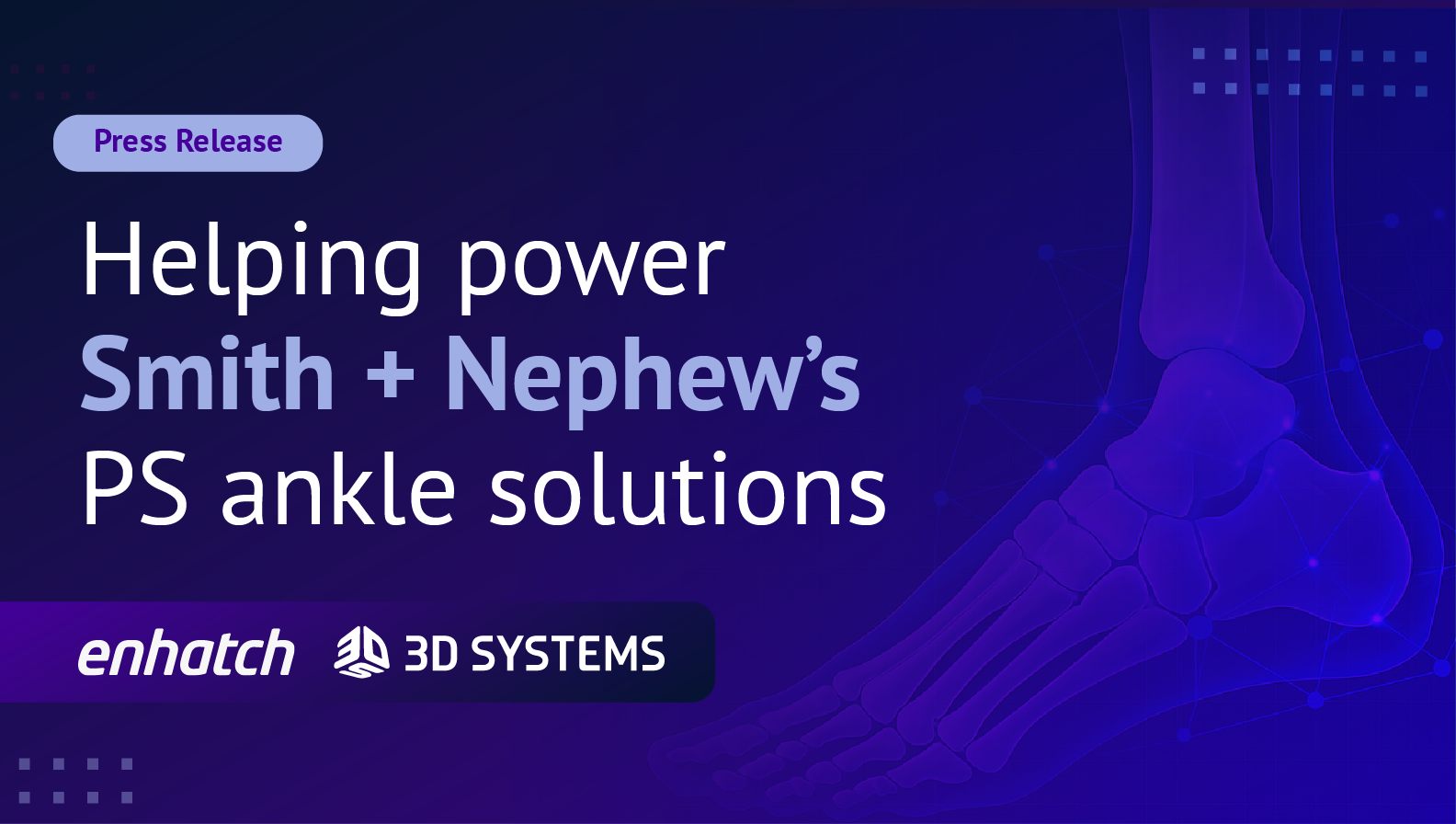From Idea to Impact: Lessons from Building a Medtech Startup

Building a successful Medtech startup is a journey filled with challenges, triumphs, and countless lessons learned along the way. As one of the founders at Enhatch, I've had the privilege of navigating this path. I'm excited to share some key insights from our journey of building a Medtech startup.
Pick the right scalable problem
One of the foundational steps in building a Medtech startup is identifying scalable problems that need to be solved better. Depth of domain knowledge is critical in picking the right problem. After spending several years in the orthopedic industry, we recognized some key issues that needed to be solved.
Streamlining preoperative planning/virtual surgical planning
The demand for patient-specific solutions (3D anatomical models, cutting guides, and implants) was rising. However, scaling patient-specific solutions with current preoperative planning solutions was challenging.
Many of the existing players in the market were software solutions companies. Most companies did not have years of experience developing and launching orthopedic products. Our team had spent decades successfully developing and launching products at companies like Stryker Orthopedics and Tornier. We saw this as a key differentiating factor.
Our team also understood the needs of all the critical stakeholders in the orthopedic ecosystem (medical device companies, surgeons, hospitals, distributors).
As a result, we saw an incredible opportunity to streamline the virtual surgical planning process significantly.
- An intuitive solution could help multiple stakeholders collaborate easily during the Virtual Surgical Planning (VSP) process.
- Integrating artificial intelligence (AI) could help increase the efficiency and accuracy of existing processes (for example, manual segmentation).
- Rapid identification of data issues and case visibility/tracking are other areas that needed improvement.
Improving the efficiency of field operations and last-mile logistics
Another opportunity that we identified was in the area of medical device field operations and last-mile logistics, often leading to a lack of visibility, service level disruptions, and increased inventory costs. We saw an opportunity to leverage technology to increase visibility and improve the efficiency of field operations for medical device companies and distributors.
Opportunity to offer a comprehensive suite of solutions
When we looked at the market, we saw companies either offering surgical planning/preoperative planning solutions or Medtech-focused supply chain solutions.
No player offered a comprehensive suite of solutions from streamlining preoperative planning to managing last-mile logistics. We saw an opportunity to provide an integrated suite of solutions driven by artificial intelligence (AI) to manage the entire process by:
- Improving customer engagement.
- Streamlining surgical planning.
- Managing supply chain efficiency and last-mile logistics.
When we examined the Total Addressable Market (TAM) and the need for these solutions, the scale was massive. Discussions with key stakeholders in the orthopedic ecosystem further validated this need.
Build a team aligned with your vision
Building a successful startup is a team effort, and assembling the right team is crucial to achieving your goals. At Enhatch, we were fortunate to bring together a diverse team of talented individuals who shared a passion and a commitment to advancing healthcare.
Each team member brought unique perspectives and skill sets essential to building a Medtech startup.
When building your team, prioritize individuals who possess the necessary expertise and align with your vision, values, and culture.
Cultivating a cohesive team that shares a common purpose will drive collaboration, innovation, and success.
Find the right investors
Securing funding is critical to scaling a Medtech startup, but finding the right investor who shares your long-term vision for impacting healthcare is also essential.
Medtech startups have longer incubation cycles. So, when looking for an investor, look for people who understand the space or are interested in impacting healthcare.
For example, when seeking investment for Enhatch, we sought partners who believed in our vision and brought industry expertise, strategic insights, and valuable connections.
We found such partners in firms like Numeta Capital and Apis Holdings who believed Enhatch's vision to make surgeries faster, safer, and smarter. The quotes below highlight why they invested in Enhatch:


So, when evaluating potential investors, prioritize partners who can provide value beyond capital and align with your mission.
Product-focused, quality-first approach pay off
As a Medtech startup founder, I've learned firsthand the importance of patience and prioritizing quality in product development. My advice to fellow startup founders is to embrace patience as a virtue and prioritize getting it right over rushing to market.
- A focus on quality ensures our products' safety and efficiency and builds a formidable moat against competitors.
- Also, concentrate your efforts on constructing a world-class product to guarantee differentiation.
At Enhatch, we wanted to focus on product-led growth and keep our sales and customer-acquisition costs low. Product-led growth happens when the product(s) far exceed existing solutions in the market.
- We did multiple iterations on the product with multiple target customer feedback loops.
- We incorporated the requirements of all our target customer segments (medical device companies, surgeons, distributors, hospitals) during the development process.
- Even within medical device companies, we segmented the requirements according to the size of the companies. For example, small to medium medical device firms might have different needs than larger firms.
We ingrained a DNA of customer obsession into our startup's culture, ensuring every decision revolves around exceeding customer expectations. This is a critical competitive advantage for startups, as research has shown that only 3% of companies are actually customer-obsessed.
The recent US Food and Drug Administration (FDA) 510(k) approval for Enhatch's patient-specific AI-driven instrumentation system for total knee arthroplasty is a perfect example of the benefits of our quality-first, customer-focused approach.
By taking the time to iterate, refine, and perfect our solutions, we lay a solid foundation for long-term success. Remember, in the Medtech world, getting it right is not just a goal – it's a commitment to improving patient outcomes and transforming lives.

Establish key strategic partnerships
Forging the right strategic partnerships is vital for an early-stage medical device startup. These collaborations can enhance product development and provide access to potential customers.
For example, Enhatch's strategic partnership with 3D Systems Healthcare, a leading provider of additive manufacturing and 3D printing solutions, is a perfect example. Through this partnership, Enhatch and 3D Systems are helping medical device companies and health systems scale the delivery of personalized solutions. Our product offering at Enhatch was a great complement to the 3D-printing/additive manufacturing solutions offered by our partners.

Apart from strategic partnerships, strategic acquisitions can also help expand your product and customer offerings. Enhatch's acquisition of Surgisoft's advanced inventory management solution is a perfect example. Through this acquisition, we added an integral product offering for our medical device customers.
Relentlessly focus on unit economics as you scale
After establishing product-market fit, Medtech startups must prioritize unit-level economics to navigate growth effectively. By meticulously analyzing customer acquisition costs, identifying effective acquisition channels, and evaluating customer lifetime values, startups can optimize investments and resource investments. This is especially important in today's tight capital-raising environment and longer fundraising cycles.
At Enhatch, we have established a dedicated Revenue Operations (RevOps) function to refine and monitor metrics as we scale. This ensures that every decision aligns with our overarching goal of delivering value to our customers and investors.



